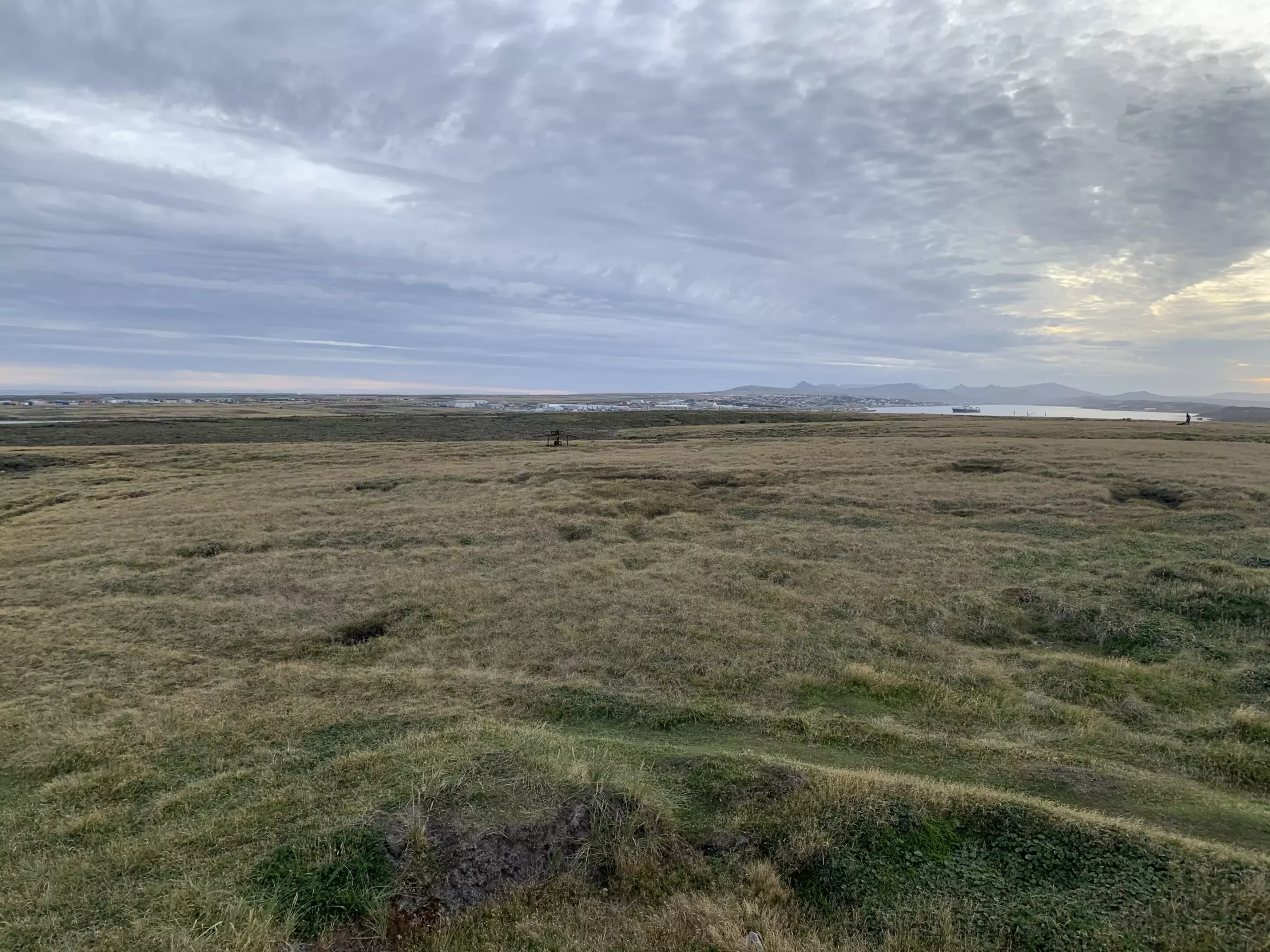In an astonishing revelation from the depths of the Falkland Islands, a team of researchers led by Dr. Zoë Thomas from the University of Southampton has unearthed compelling evidence suggesting that this desolate archipelago was once enveloped in a thriving rainforest ecosystem up to 30 million years ago. The findings, recently published in the journal *Antarctic Science*, offer a glimpse into a lush world that starkly contrasts the current treeless, windswept grasslands of the islands.
The discovery was serendipitous, born out of a chance conversation that highlighted the importance of local knowledge in scientific endeavors. During a research visit for an unrelated study, the team was alerted to the presence of ancient tree remnants uncovered during construction work in Port Stanley, the islands’ capital. The collaborative spirit and openness of the small, close-knit community played a crucial role in guiding researchers to these extraordinary finds.
Connecting with the Community: A Serendipitous Encounter
Dr. Thomas recounts that the team’s initial exploration of the area suddenly transformed when they learned about the stump remnants and preserved tree trunks exposed at a construction site. They discovered that excavators had unexpectedly revealed a deep peat layer filled with these ancient relics, surprisingly well-preserved. The contrast between today’s harsh environment, dominated by strong winds and acidic soil that cannot support tree life, and the rich history indicated by the remains ignited a passionate curiosity among the researchers.
One might wonder how such a vibrant ecosystem could emerge in a region now characterized by harsh climatic conditions. The findings challenge our understanding of the Falkland Islands’ climatic history and raise fascinating questions about the natural changes that have occurred over millions of years.
Following the initial discovery, the research team worked closely with the South Atlantic Environmental Research Institute (SAERI) to collect samples from the site at Tussac House near Stanley Harbour. These specimens were subsequently transported to the University of New South Wales in Australia for rigorous analysis.
Due to the age of the remains, conventional radiocarbon dating methods fell short, leading the scientists to rely on fossilized pollen—a clever pivot that showcases the intricacies of paleoecological research. By examining pollen spores encapsulated within the same peat layers as the tree remains, researchers were able to approximate the age of the forest to between 15 and 30 million years, painting a picture of a vastly different climate that once flourished in what we now see as barren lands.
The climate during the time these ancient forests thrived was fundamentally different from the present. Back then, the South Atlantic region was likely much warmer and wetter, offering ideal conditions for a diverse range of plant and animal life. Although the ecosystem would not resemble today’s tropical rainforest diversity, it possessed its own unique richness—one that has now become nothing more than a memory buried beneath layers of time.
The realization that many of the tree species that once flourished on the island have since gone extinct provides an additional layer of melancholy. The prevailing winds, once capable of transporting seeds from the thriving rainforests of South America, are part of a historical narrative that ties the islands to a wider ecological system that has drastically changed.
While the study sheds light on the past, it also invites speculation regarding what may have led to the drastic shift from a thriving rainforest to the current peatland ecosystem. Dr. Thomas hints at climatic changes as a possible contributor to this transformation. Such shifts could have induced colder and drier conditions that were incompatible with the rainforest’s continued existence.
This narrative serves as a stark reminder of the dynamic nature of ecosystems and how climate, geography, and biological interactions fundamentally shape the landscapes we inhabit. The findings underscore the vulnerability of ecosystems to environmental shifts, a topic of increasing relevance in today’s climate crisis.
Embracing Future Research and Collaboration
Ultimately, the success of this groundbreaking study illustrates the profound significance of community engagement in scientific research. The friendships formed and insights shared among researchers and islanders were instrumental in uncovering a valuable slice of history that had previously been hidden from view. As Dr. Thomas emphasizes, the chance encounters and openness of the Falklanders offered a unique opportunity to investigate what could easily have been lost to time.
As we look ahead, the implications of such discoveries extend beyond understanding the past; they beckon us to foster collaborative relationships that combine scientific inquiry and local knowledge. In doing so, we not only preserve histories buried beneath the surface but also enrich our comprehension of the ever-evolving tapestry of life on Earth.


Leave a Reply